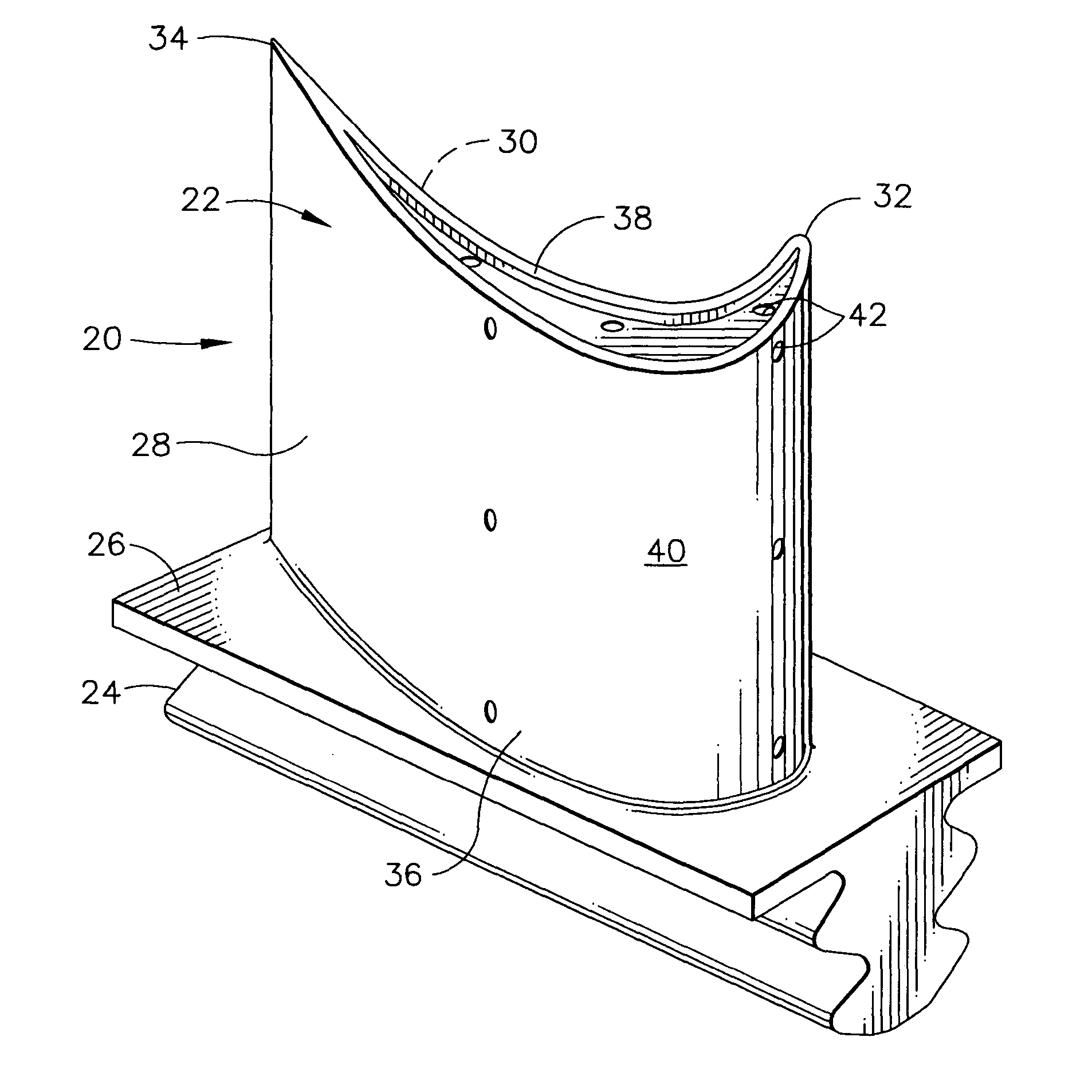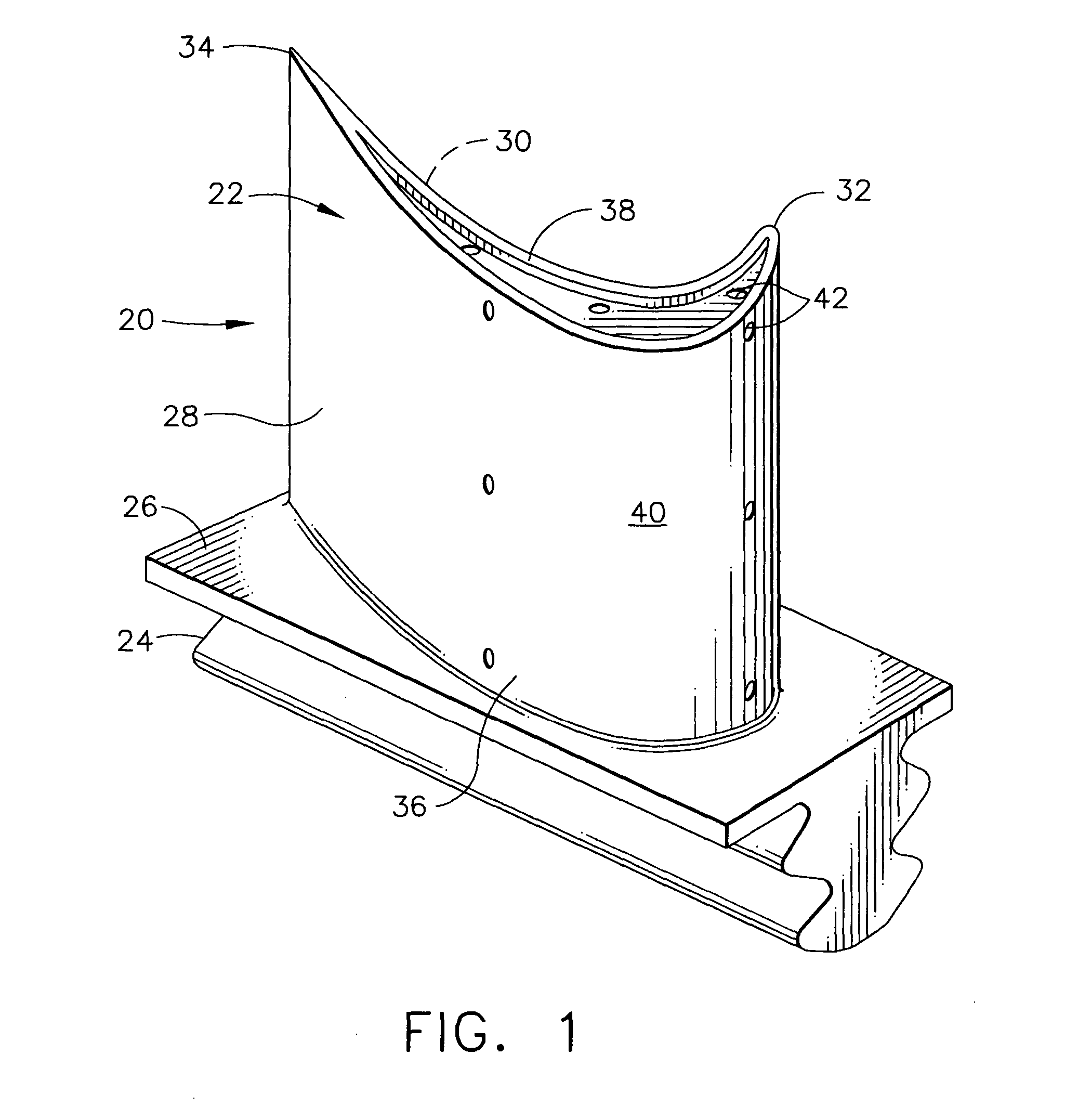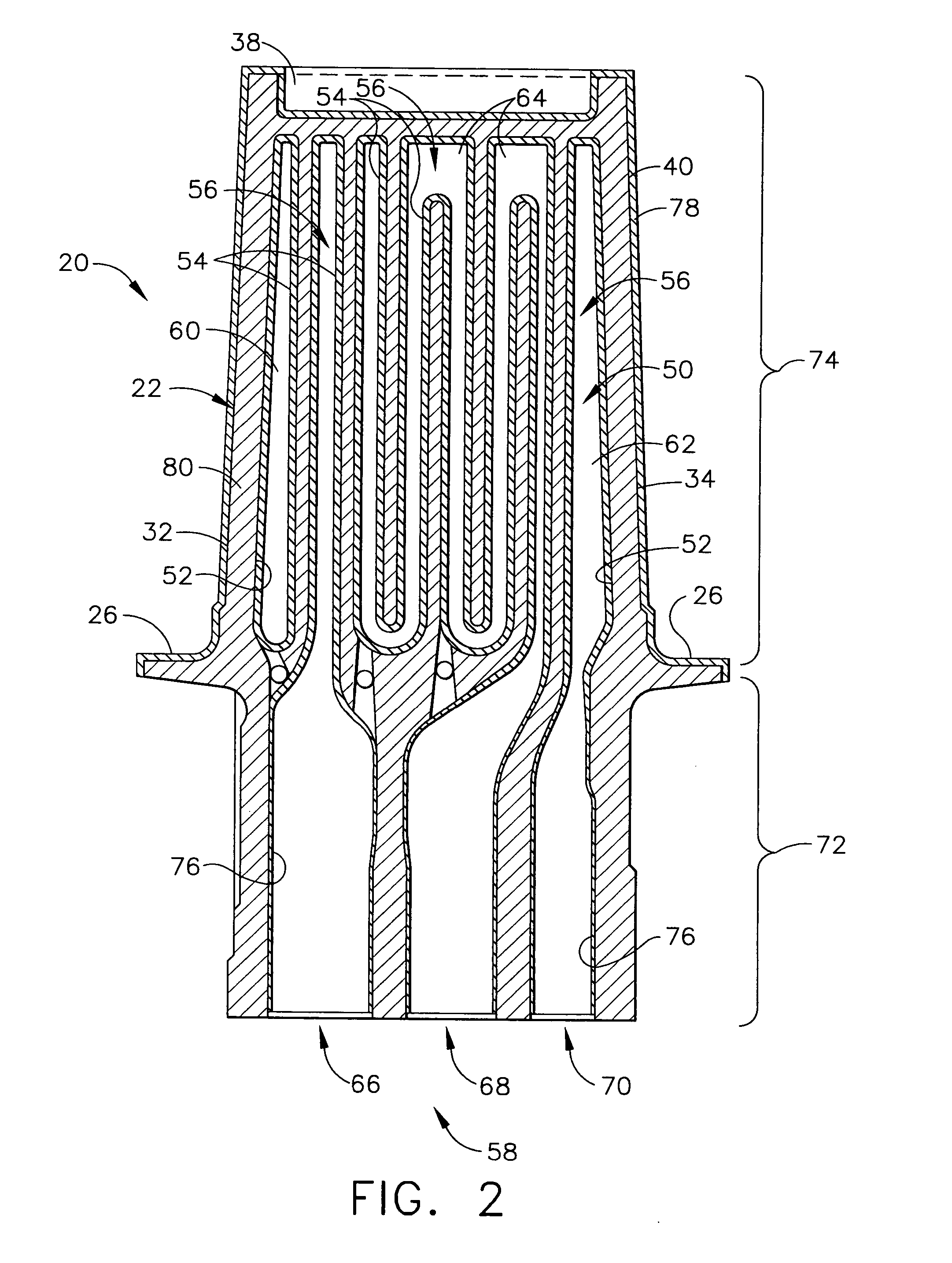Aluminide coating of turbine engine component
a technology of turbine engines and components, applied in the direction of solid-state diffusion coatings, vacuum evaporation coatings, coatings, etc., can solve the problems of premature failure of the blades of the engine, high cost and difficulty in controlling
- Summary
- Abstract
- Description
- Claims
- Application Information
AI Technical Summary
Problems solved by technology
Method used
Image
Examples
example 1
[0046] A process of the present invention is used to form an aluminide coating to turbine blades in the coating container shown in FIG. 3. The blades are loaded into the coating container and heated to a temperature of about 270° C. A tri-n-butyl aluminum coating gas is then flowed into the coating container at a pressure of about 500 mtorr (about 6.8 kgf / m2) for about 5 hours to force the aluminum coating vapors to flow around the blades and through the cooling holes and internal cooling cavities of the blades, thereby depositing an aluminum coating on the external and internal surfaces of the blades. Some of the aluminum coating gas is ducted into the dovetail portions of the blades so that the vapor flows through their internal cooling cavities and out their cooling holes. The thickness of the aluminum coating is controlled by the temperature, gas flow, and elapsed time of the gas flow. The coated blades are then heated in a vacuum to a temperature of about 670° C. for about 5 ho...
example 2
[0048] A process of the present invention is used to form an aluminide coating to turbine vanes in the coating container shown in FIG. 3. The vanes are loaded into the coating container and heated to a temperature of about 450° C. A tri-n-butyl aluminum coating gas is then flowed into the coating container at a pressure of about 100 mtorr (about 1.4 kgf / m2) for about 1 hour to force the aluminum coating vapors to flow around and through the vanes, thereby depositing an aluminum coating on the external and internal surfaces of the vanes. Some of the aluminum coating gas is ducted into the internal cooling cavities of the vanes so that the vapor flows through the cooling cavities and out the cooling holes. The thickness of the aluminum coating is controlled by the temperature, gas flow, and elapsed time of the gas flow. The coated vanes are then heated in a vacuum to a temperature of about 670° C. for about 1 hour to form an aluminide coating on the external and internal surfaces of t...
PUM
| Property | Measurement | Unit |
|---|---|---|
| temperature | aaaaa | aaaaa |
| pressure | aaaaa | aaaaa |
| temperature | aaaaa | aaaaa |
Abstract
Description
Claims
Application Information
 Login to View More
Login to View More - R&D
- Intellectual Property
- Life Sciences
- Materials
- Tech Scout
- Unparalleled Data Quality
- Higher Quality Content
- 60% Fewer Hallucinations
Browse by: Latest US Patents, China's latest patents, Technical Efficacy Thesaurus, Application Domain, Technology Topic, Popular Technical Reports.
© 2025 PatSnap. All rights reserved.Legal|Privacy policy|Modern Slavery Act Transparency Statement|Sitemap|About US| Contact US: help@patsnap.com



